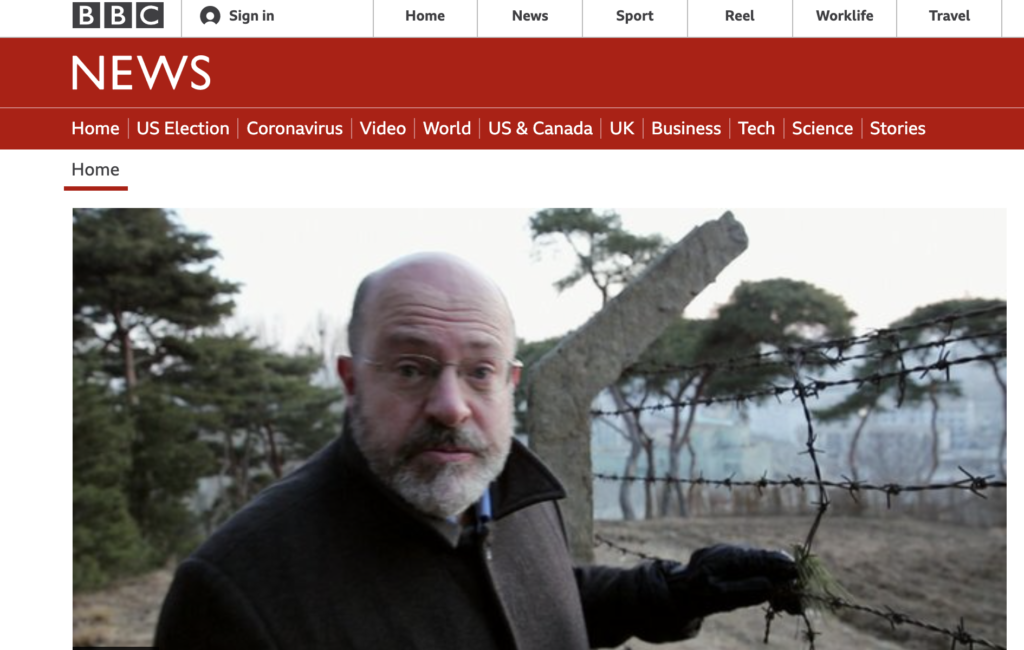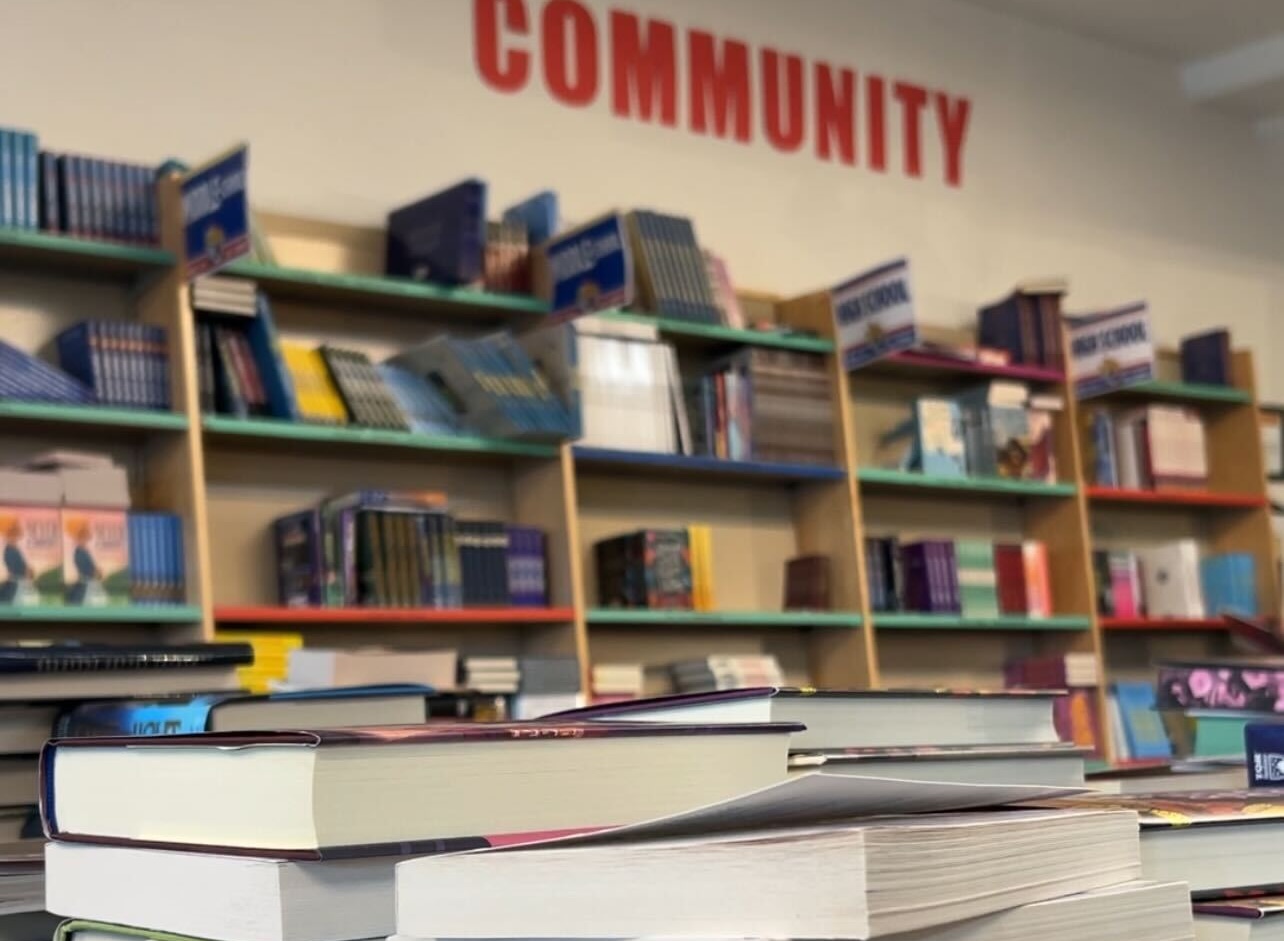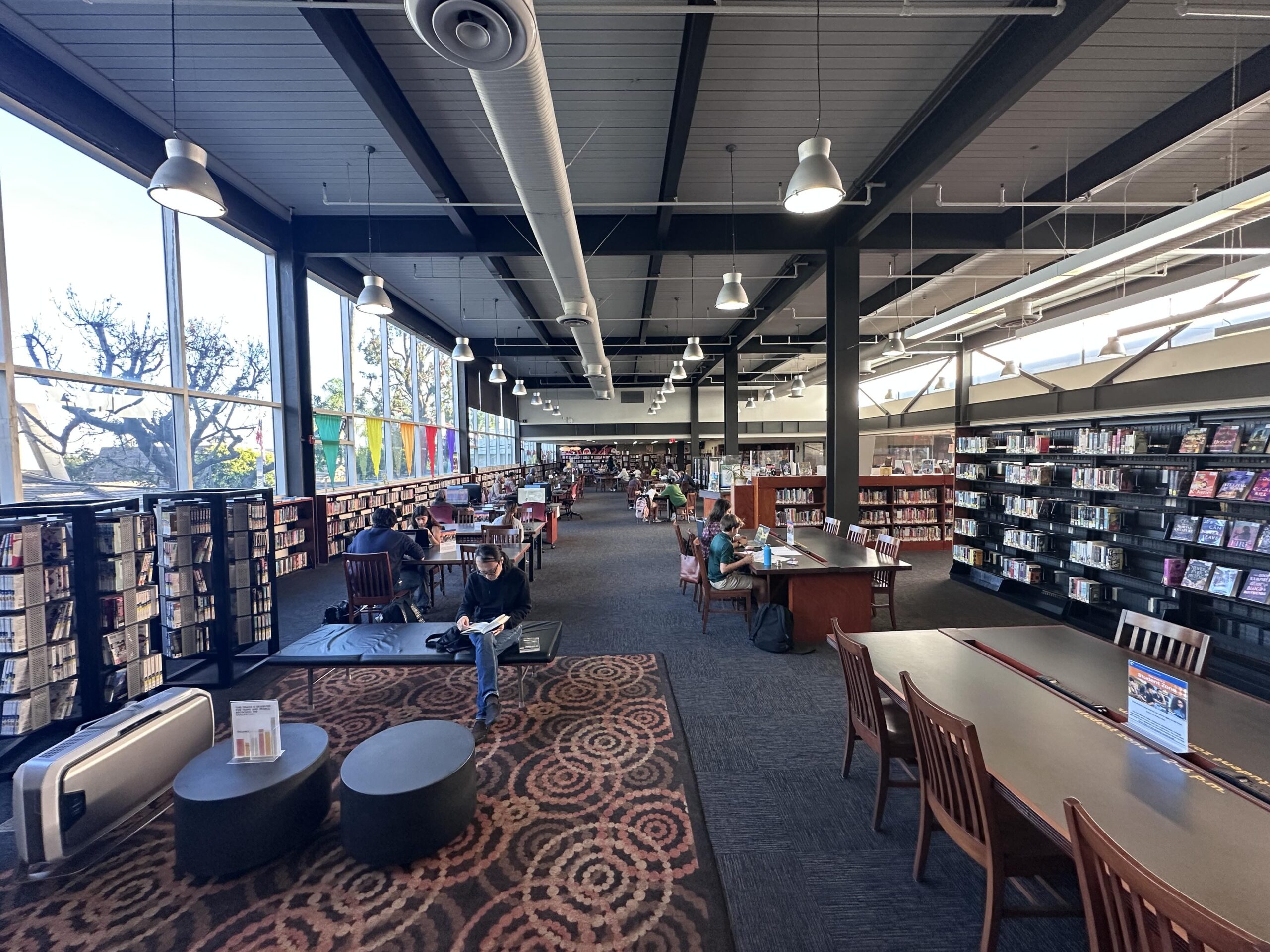John Sweeney posed as a professor among a group of economics students to gather footage for BBC Panorama’s ‘North Korea Undercover.’ [Credit: The BBC]
(NEW YORK) — In 2013, John Sweeney of investigative series BBC Panorama wanted to report about life in North Korea. Since journalists were all but banned from the country, he was unable to gain access through any traditional means. Instead, he went undercover, posing as a professor with a student group from the London School of Economics that was headed there on an official scheduled tour.
The group spent eight days in the rigidly controlled country, with Sweeney filming whatever he could. His resulting report, North Korea Undercover, took us into a world we rarely get to see. But when it was released, and Sweeney’s methods were revealed, there was outrage and concern that he had seriously endangered the students he traveled with.
What Sweeney showed us
North Korea is known for holding a firm grip on the national image it puts out into the world—one of militaristic power, order, and fierce dedication to the regime.
But the content Sweeney collected in Pyongyang, the nation’s capital, was different. North Korea was eerily bleak. Gray sky, gray cement, gray mood. The power consistently went out, if it was ever there at all. Their tour bus passed a woman washing clothes in a filthy freezing river, groups of people scavenging for food scraps in the mud, and bare markets. Barbed wire separated the visitors from the dusty landscape of collapsing houses and starvation. The vigilant tour guides shouted, “No photos!” as they passed, determined to hide the country’s truth.
Instead, the tour was taken to factories (without production), hospitals (without patients), libraries (without books), and farms (without fields, crops, or animals). They drove right past the gulags—concentration camps—without a word. The only place that felt warm and colorful was the mausoleum where corpses of former rulers Kim Il-sung and Kim Jong-il lay preserved in glass boxes, surrounded by roses and red velvet.
Parades of uniformed officers in the city square bore an uncomfortable resemblance to Hitler’s annual Nazi rallies in Nuremberg before World War II. Thousands of identical militants marched in perfect rows. Loudspeakers blared with nationalist propaganda. Portraits of the Kims hung in every entrance hall and subway car, while statues of them guarded most street corners.
Sweeney’s footage shows us a dangerous façade, which barely covered its cracks. He referred to it as “tourism, Stalin style.”
The value of his access
North Korea is ranked at the very bottom, number 180 out of 180, in Reporters Without Borders’ 2020 World Press Freedom Index. According to the international nonprofit organization, “The regime continues to exercise meticulous control over the information available to the foreign media.” Any journalist who is lucky enough to gain access is intensely monitored by a guide at all times.
In 2015 Anna Fifield, one of the Washington Post’s top reporters in Asia, wrote about her experience visiting North Korea as a journalist.
“A journalist’s regime-set schedule is always heavy on Kim-worship,” she wrote. “And there are few options for dictating your own itinerary.”
At times, Fifield was able to conduct some interviews, but acknowledged that her sources were hardly honest.
“Do I think I had frank and truthful conversations with those people? No,” she said. “They would be risking their jobs, and maybe their lives, to deviate from the regime’s line. I always assumed I was being given the official story, and made this clear in my reporting.”
John Sweeney was still a prisoner of the tour’s official schedule, but his disguise allowed him to capture and comment on candid video footage in real time. Suspicions around him were lower than those of a known reporter, and he was able to walk among the student group to deflect any direct attention. His questions and photos could be camouflaged as educational rather than news-gathering.
The fallout
Immediately after Panorama’s program aired, the criticism of Sweeney’s undercover tactics came flooding in. According to the BBC, an email sent by the London School of Economics to its students and staff read: “It is LSE’s view that the students were not given enough information to enable informed consent, yet were given enough to put them in serious danger if the subterfuge had been uncovered prior to their departure from North Korea.”
The LSE students’ union demanded that the Panorama program be withdrawn, but the BBC declined, arguing that students were granted sufficient information to judge the risks of the trip.
“We recognized that because it could increase the risks of the trip, the students should be told in advance that a journalist intended to travel with them,” said a spokesperson for the BBC. “They were given this information, and were reminded of it again, in time to have been able to change their plans if they wanted to.”
The back-and-forth continued, and one year later, after a host of investigations by the BBC Trust—the company’s independent governing body—the network released a statement regarding the rulings on Panorama’s report. The Trust found that a strong public interest in the program existed and that the BBC management had followed all of the correct procedures.
However, the BBC “apologized to Student X for the finding by the Trust that insufficient information was given to her ahead of the trip … and also apologized to the LSE for the Trust’s finding that the programme created the risk of harm to the LSE’s reputation.”
Was it worth it?
Being discovered as a hidden journalist in North Korea is no small crime. A subsequent New York Times article highlighted two American journalists who were arrested in North Korea and sentenced to 12 years of hard labor in 2009. Former President Bill Clinton flew to Pyongyang and negotiated their release four months later.
In the ultra-nationalist country, anyone who speaks against the regime is in danger. In Sweeney’s report, North Korean defector Ji Seong Ho said, “In North Korea if you say the wrong thing you will die. You’ll be sent to a political prison camp. Even if one knows, sees, or hears something, one must pretend to be ignorant. Disagreement isn’t an option. Disagreement means death.”
In this kind of culture, if Sweeney and his team were exposed, the safety of their entire party would surely have been compromised and punishment would have followed. The stakes were undoubtedly high, and the BBC was aware of this.
In Sweeney’s report, he interviewed many sources—analysts and professors who specialize in North Korea, international affairs workers, and multiple North Korean defectors. They gave a solid amount of insight that could have stood on its own as an informational piece of journalism.
But there is undeniably something more powerful in seeing life inside the strictly controlled country, rather than just hearing about it. Think of the difference between hearing about the devastation caused by Hurricane Katrina in 2005, and then seeing actual photos and videos of the city of New Orleans underwater, with only rooftops visible on the flooded streets. The stories are instantly contextualized and confirmed.
So much of the information we’re fed about North Korea is clouded in secrecy and easy to write off as untrustworthy. But this BBC report gives validity to our suspicions about life inside those borders. A starving nation is hiding behind brainwashing and military showmanship. The less information we have about a country on the brink, especially one threatening others with thermonuclear war, the more dangerous it is for everyone.
In the BBC editorial guidelines, it states, “We should ensure that the public interest in our journalism is not outweighed by public concern about any harm that may have been caused by our methods.”
Many would argue that this is not the case. John Sweeney is lucky he pulled it off; the trip could have had a very different outcome. The danger of everyone involved felt imminent, but the Panorama footage was compelling, and an inside look at North Korean life is rare and invaluable.
In the end, the need for access to this nation just barely tipped the scales to justification of Sweeney’s means.
As Ceri Thomas, BBC Head of Programmes, stated in a follow up interview, “It’s vital that we get in. The public has a very strong interest in seeing what’s going on inside North Korea and being able to get some idea of the atmosphere, trying to understand what the mood of the country is. … The only people we deceived in the making of this program were the North Korean government.”


